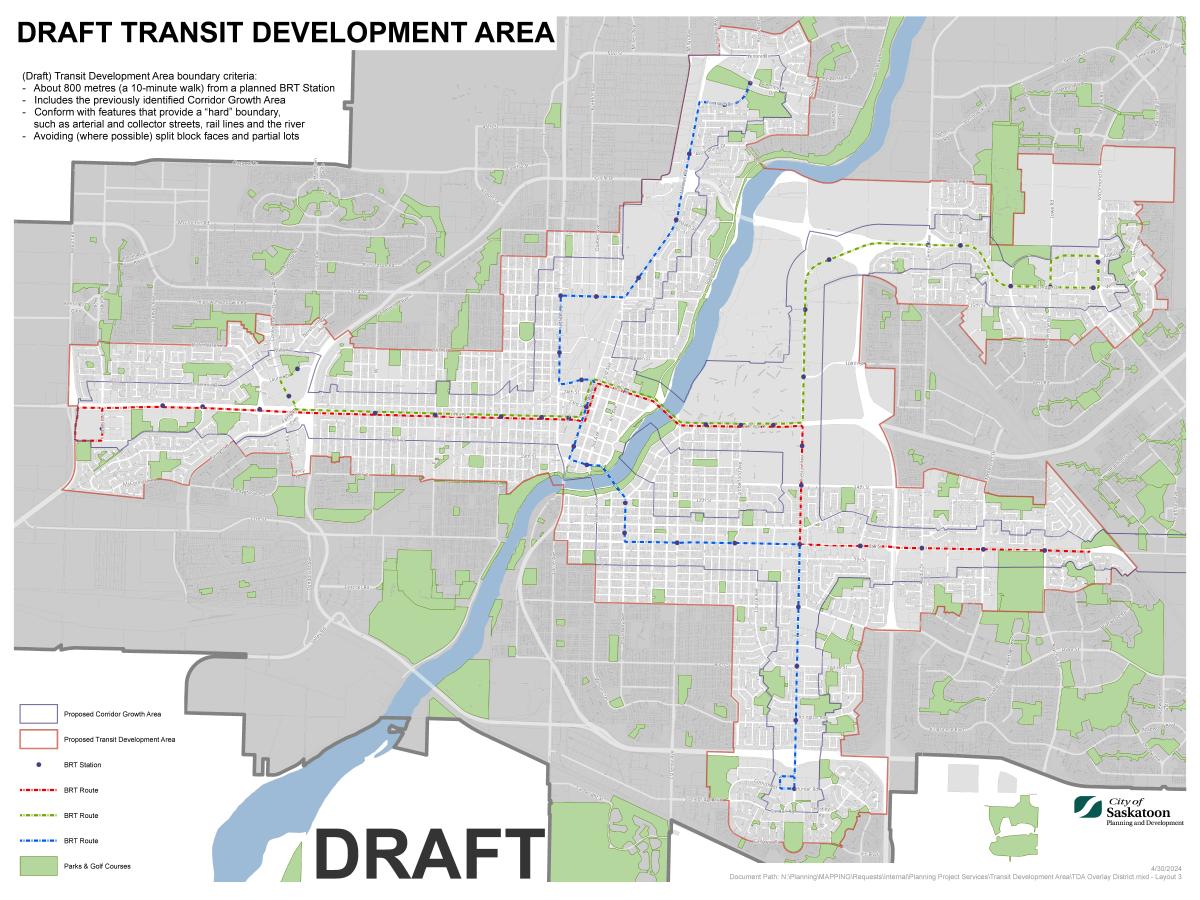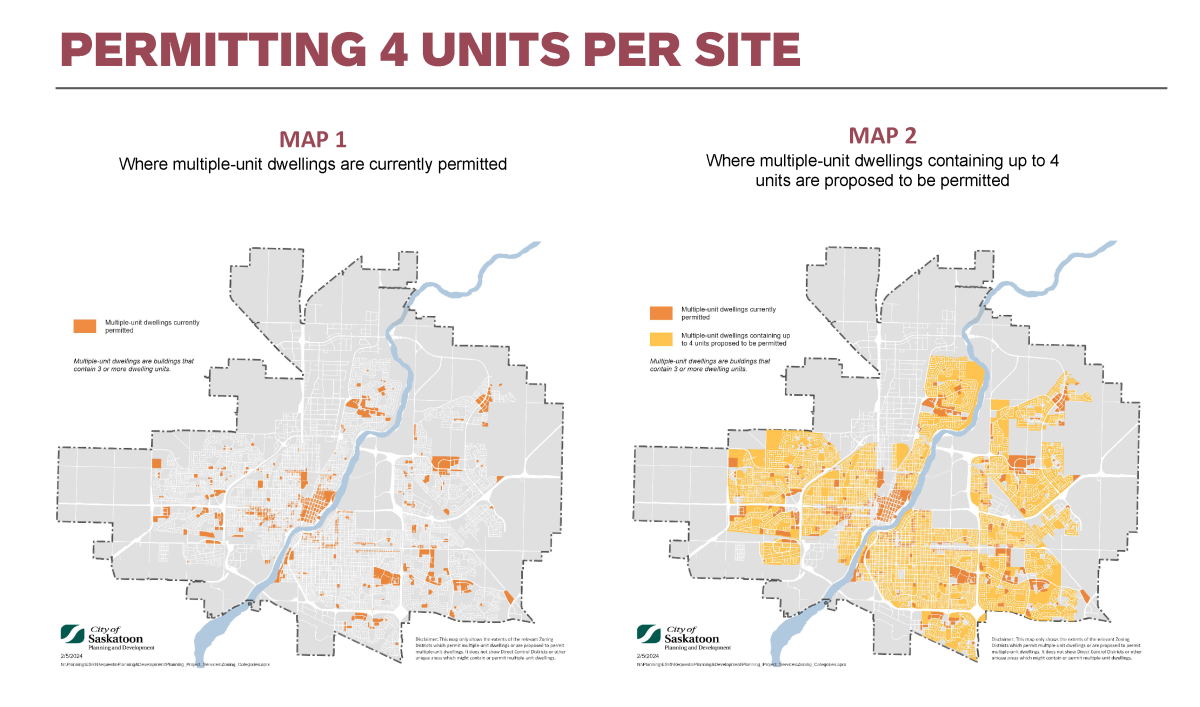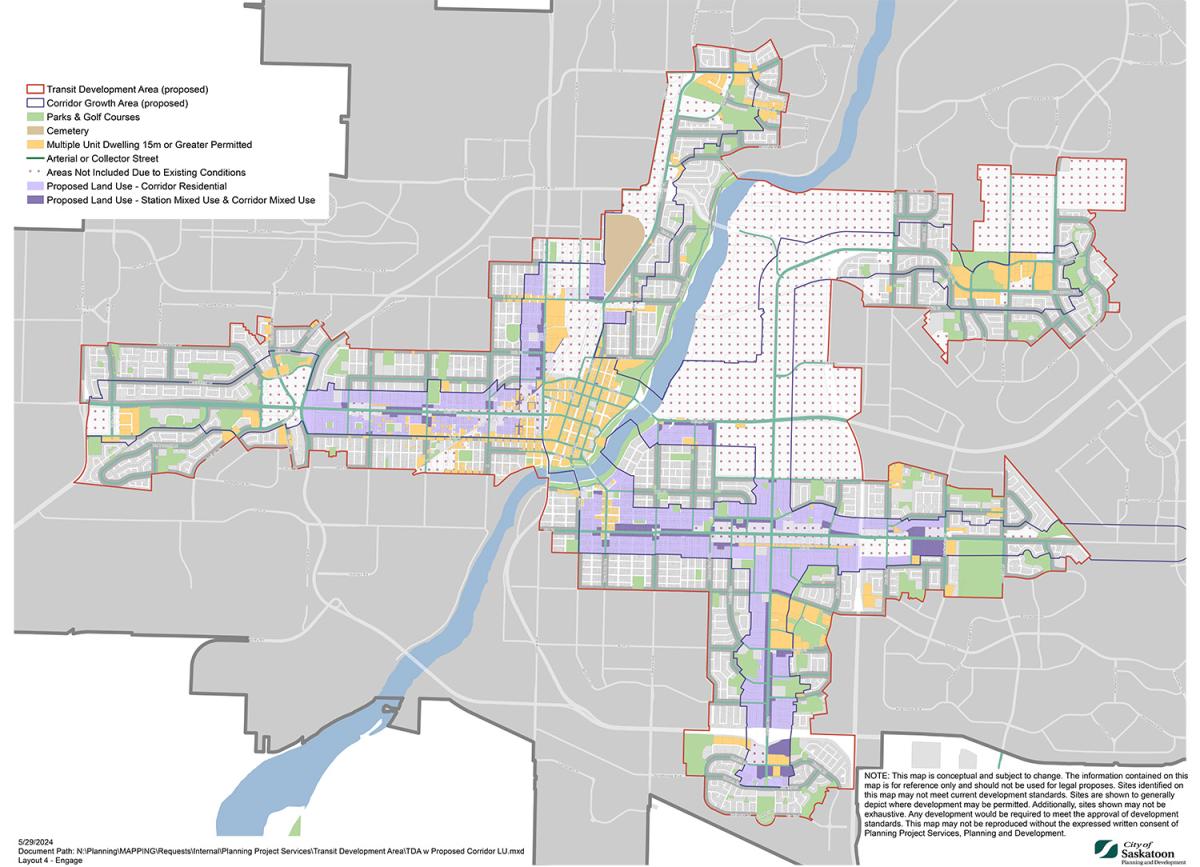About HAF
ARCHIVED: last updated June 11, 2024
This page is an archive and is no longer being updated. To view the latest information about the Housing Accelerator Fund, please visit saskatoon.ca/HAF.
Welcome to the Engage Page for the Housing Accelerator Fund!
If you have any questions or can't locate the information you need, please contact us at zoningbylaw@saskatoon.ca.
About the Housing Accelerator Fund
The Government of Canada's Housing Accelerator Fund (HAF) supports local governments in building more homes, faster. The program is aimed at increasing housing supply and supporting the development of communities that are more affordable, diverse and climate-resilient.
On Feb 28, 2024, the Government of Canada and the City of Saskatoon announced an agreement to fast-track housing over the next three years. The agreement will provide $41.3 million to eliminate barriers to build more homes in Saskatoon.
Watch the HAF video to learn more
Housing Action Plan
In May 2023, City Council approved Saskatoon’s Housing Action Plan. The plan outlines 13 initiatives that the City will undertake to meet the commitments under the Housing Accelerator Fund application. For more information about the Housing Action Plan, visit: saskatoon.ca/housingactionplan.
FAQs
What is the Housing Accelerator Fund?
The HAF is a funding agreement between the Federal Government and municipalities across Canada to help speed up development and increase housing supply.
The City of Saskatoon will be receiving $41.3 million to implement the initiatives outlined in our Housing Action Plan. This will help get 940 additional new units built over three years and leverage other housing development opportunities. The funding focuses on diversifying housing options by increasing what is known as “missing middle” housing, the range of housing types that fit between single-family detached homes and mid-to-high-rise apartment buildings. It will allow multi-family units in walkable areas of the city and make use of existing infrastructure.
This is done by changing zoning regulations that deter or exclude some types of development, particularly certain housing types.
Development of missing middle housing will occur gradually over time and across the city. It will add greater variety to what we think housing in Saskatoon should look like. More people will have access to stable and affordable housing, with walkable services and access to public transit and active transportation opportunities.
Why do we need the HAF to increase housing supply?
The actions in the Housing Action Plan are a generational shift in what housing looks like. They will make it easier to build various types of homes in our communities. More people will have access to stable and affordable housing, with walkable services and nearby public transit and active transportation opportunities.
- 14,000 people moved to Saskatoon in 2023 alone, but there are only an average of 2,600 new housing units built in the city annually.
- According to the CMHC Rental Market Report – January 2024:
- The purpose-built rental apartment vacancy rate fell from 3.4% (2022) to 2% (2023). In the North, Northeast and Southeast zones of the city, the vacancy rates fell below 1 per cent.
- Rent costs increased 9% from October 2022 to October 2023 with the average two bedroom rent being $1,360.
- Available units for low-income families remain scarce, with only 5 per cent of rental stock affordable to families in the lowest income quartile.
At the same time, inflation and other pressures are making it harder for people to pay the bills, including their rent, and more people are at risk of losing their housing. The balance between housing supply and demand influences price and availability. There is an urgent need to build more housing, quickly. It needs to be as simple as possible, for as many people as possible, to build housing.
Increasing housing options also supports the City achieving actions in the Climate Action Plan by building complete and compact communities through infill development and increasing the number of multi-family buildings.
What changes are proposed through HAF?
The HAF changes are meant to:
- Reduce barriers, such as zoning restrictions, which can restrict housing development or cause it to take longer and cost more.
- Increase density, which is a more affordable way to create housing supply specifically by adding new multi-family homes like four-unit dwellings and multiplexes into existing neighbourhoods.
- Incentivize housing near transit corridors to reduce the need for cars and land used for parking.
- Encourage supportive and affordable housing developments.
These changes can be achieved through changes to zoning regulations, which will be brought forward throughout the next few months. These include:
- Reducing barriers to the building of Accessory Dwelling Units, like secondary, garage or garden suites.
- Allowing four residential units on a 15 metre (50 foot) or wider lot in a residential zoning district and applying appropriate development standards, including setbacks and site coverage limitations.
- Allowing multiple-unit development within 800 metres of a planned bus rapid transit station with appropriate development standards and servicing capacity. A new planning area called the Transit Development Area (TDA) identifies the area within which multiple-unit development will be permitted.
- Removing parking requirements throughout the city*.
*Note: This will be part of the one amendment to remove off-street parking minimums throughout the city. This does not include on-street parking, including the Residential Parking Program (RPP). The City will be exploring potential policy considerations to deal with the potential for increased on-street parking pressure.
What will allowing four storey multi-unit development within 800 metres of rapid transit look like in my neighbourhood?
Regulations permitting multi-unit development as of right are expected to apply only within the TDA. The City is currently working on identifying appropriate development standards to regulate the permitted form, massing, site coverage and related characteristics of multi-unit residential development (maximum of 15 metres). Additionally, site and location criteria and servicing ability are being considered. Please refer to the 'Multi Storey in TDA' tab for more information.
How will allowing more units on a site impact the residential parking program?
Some residential areas in Saskatoon experience significant on-street parking congestion, usually generated by nearby businesses or institutions. The Residential Parking Program (RPP) minimizes this congestion by limiting non-resident parking to a maximum amount of time.
Currently, all dwelling units including secondary suites, garden and garage suites, and up to four unit dwelling units are eligible for up to three permits per dwelling unit plus one visitor permit. New multiple-unit dwellings over four units are not eligible for permits under the RPP.
The City will be exploring potential policy considerations to deal with the potential for increased on-street parking pressure.
What can we expect will happen when the changes are implemented?
There is a significant difference between what housing development is allowed and what housing development will actually be built. Any changes from the HAF initiatives are expected to occur gradually across the city. Development will depend on many factors including economic feasibility, infrastructure capacity, market demand and availability of materials.
For example, in cities like Toronto and Kelowna that already allow four units on a lot the change in their neighbourhoods has been very incremental. Since Kelowna changed their zoning regulations in 2017, there have been very few applications for three or four units on lots smaller than 15 metres (50 feet) due to a number of factors, including market demand.
When will the City receive HAF funding and how will the HAF funding be spent?
The City of Saskatoon has received a 25% upfront advance to begin to implement the Housing Accelerator Fund Action Plan. The remaining approved funding will be disbursed in installments annually over three years until 2026/27, provided the City meets the terms and conditions of the agreement.
Information about the initiatives and how the funding will be allocated can be found here.
Will parks or other green spaces be used for residential development?
No. The City has no plans to enable housing development in parks or other green spaces. Parks and green spaces are an important part of what makes Saskatoon a great place to live. As the city grows, keeping and enhancing the green spaces we have will become increasingly important to ensure existing and future residents have supportive spaces for community, recreation and leisure activities.



